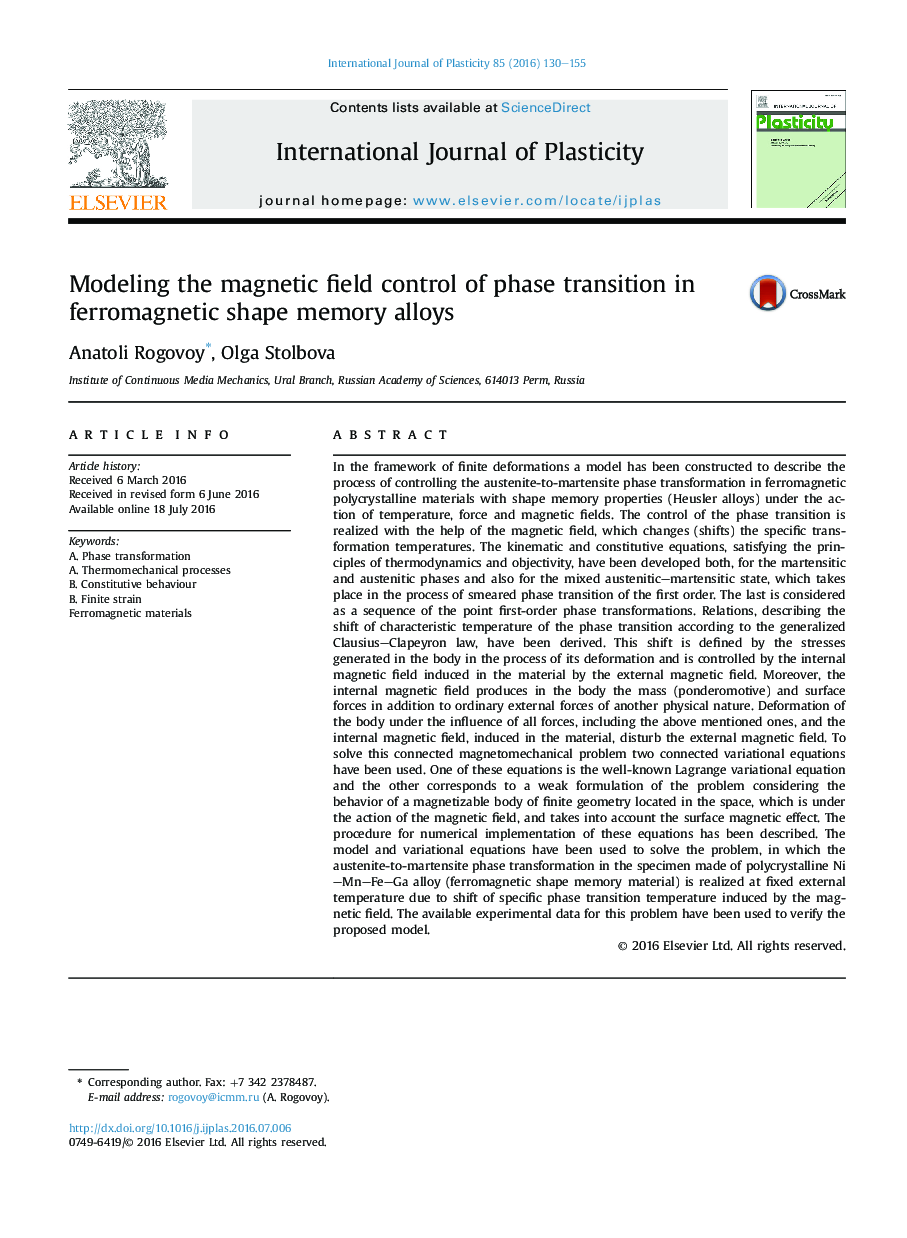| Article ID | Journal | Published Year | Pages | File Type |
|---|---|---|---|---|
| 784308 | International Journal of Plasticity | 2016 | 26 Pages |
•The process of smeared phase transition of the first order has been described.•The behavior of ferromagnetic material in such process has been simulated.•Relations, describing the shift of phase transition temperatures, have been derived.•The shift of these temperatures is controlled by the stress and magnetic fields.•Procedure for numerical implementation of obtained equations has been realized.
In the framework of finite deformations a model has been constructed to describe the process of controlling the austenite-to-martensite phase transformation in ferromagnetic polycrystalline materials with shape memory properties (Heusler alloys) under the action of temperature, force and magnetic fields. The control of the phase transition is realized with the help of the magnetic field, which changes (shifts) the specific transformation temperatures. The kinematic and constitutive equations, satisfying the principles of thermodynamics and objectivity, have been developed both, for the martensitic and austenitic phases and also for the mixed austenitic–martensitic state, which takes place in the process of smeared phase transition of the first order. The last is considered as a sequence of the point first-order phase transformations. Relations, describing the shift of characteristic temperature of the phase transition according to the generalized Clausius–Clapeyron law, have been derived. This shift is defined by the stresses generated in the body in the process of its deformation and is controlled by the internal magnetic field induced in the material by the external magnetic field. Moreover, the internal magnetic field produces in the body the mass (ponderomotive) and surface forces in addition to ordinary external forces of another physical nature. Deformation of the body under the influence of all forces, including the above mentioned ones, and the internal magnetic field, induced in the material, disturb the external magnetic field. To solve this connected magnetomechanical problem two connected variational equations have been used. One of these equations is the well-known Lagrange variational equation and the other corresponds to a weak formulation of the problem considering the behavior of a magnetizable body of finite geometry located in the space, which is under the action of the magnetic field, and takes into account the surface magnetic effect. The procedure for numerical implementation of these equations has been described. The model and variational equations have been used to solve the problem, in which the austenite-to-martensite phase transformation in the specimen made of polycrystalline Ni–Mn–Fe–Ga alloy (ferromagnetic shape memory material) is realized at fixed external temperature due to shift of specific phase transition temperature induced by the magnetic field. The available experimental data for this problem have been used to verify the proposed model.
